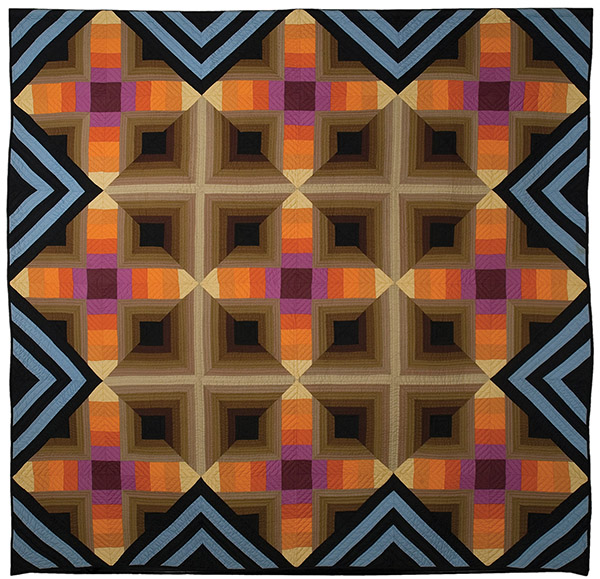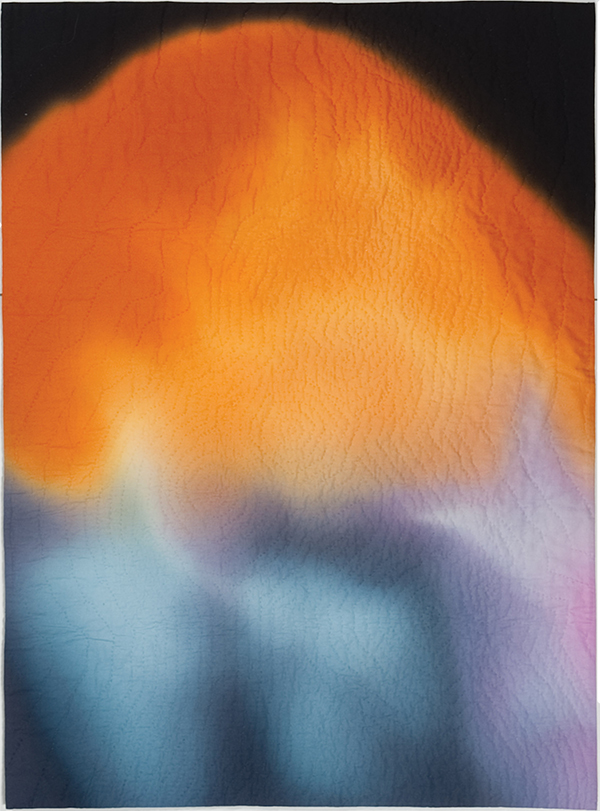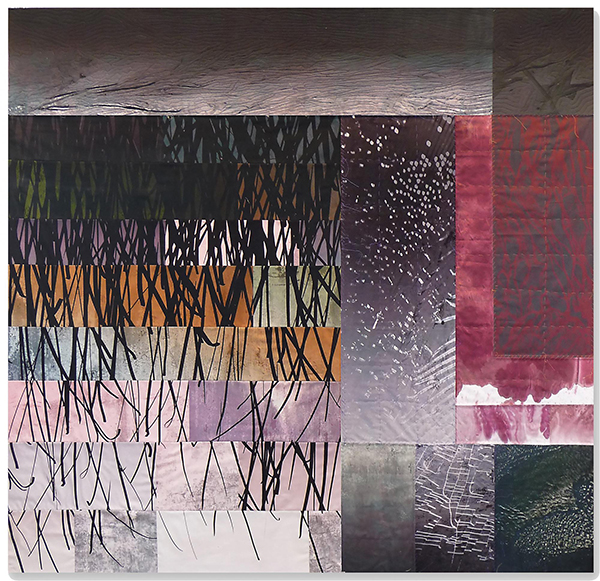Reprinted from Art Quilt Collector #3
The studio art quilt collection at the International Quilt Study Center & Museum (IQSCM) at the University of Nebraska, Lincoln, represents one of the world’s most significant collections, numbering more than 300 examples that range from the mid-1970s to the current year. Launched by collectors Ardis and Robert James, with the guidance of quilt curator and historian Penny McMorris, the collection includes work by twenty of the artists whose quilts are included in the book The Twentieth Century’s Best American Quilts (1999). Since 1997, when the James’ donated their collection to the University of Nebraska, building the studio art collection has become the purview of the IQSCM’s Acquisition Committee.
The IQSCM’s committee is often asked, even challenged, to explain how we decide what will be added to the studio art collection. There are many different elements that we take into consideration. First of all, the definition and separation of pieces within the collection is problematic. We exhibit a variety of pieces on the walls of our museum and try to avoid placing them within particular categories. All of the quilts, whether new or old, used for the bed or to be hung on the wall, contain artistic elements and decisions that the maker consciously or subconsciously considered: line, color, repetition, depth, materials, and techniques.
So, when asked, “Are all quilts art?” we answer “yes.” How then, do we define the particular pieces we designate as studio art quilts? One quite simple way is through the maker’s intent — typically, the quilts we define as studio art quilts are delineated as such by their makers and act as creative expressions meant to be displayed. The functionality of quilts isn’t denied in these works; in fact, it is often embraced, but these pieces are quite simply not meant to warm a body. We use the term “studio art quilts” to catalog these works.
The inevitable questions then follow: how do you know what is good and how do you decide what to collect? These questions are more difficult to answer.
What guides our choices as we build the collection? One of the ways that we try to achieve balance is to use a voting system to guide us. Our committee members come from widely diverse backgrounds, with a host of experiences that helps to guide our choices.
Each of us recognizes that we have subjective styles or visions, so we rely on one another to see quilts in different ways. We also travel to exhibitions around the world to see quilts — there’s no substitute for standing in front of a particular piece. We follow artists over time to see how their work progresses. We consider the context of each particular quilt or artist: under- standing the development of art history tells us much about what artists are exploring and seeking to express at any moment in time.
But how to define what makes something good or bad? That can be a very subjective interpretation. For myself, I’m looking for wall power, a phrase I borrowed from Simon de Pury of Phillips auction house, when he was featured on the Colbert Report discussing contemporary art in an upcoming auction. De Pury explained that art has wall power “when it leaps off the wall.” It’s a term that I find most easily expresses a quilt’s indefinable qualities, evoking a response in me when looking at any type of art. Wall power makes a piece stay in my head, whether I particularly love it or not.

1976 Crosses - Nancy Crow
It’s difficult to single out any one favorite in the IQSCM’s large collection. Certain pieces, however, transcend the test of time and look fresh and unique even as time passes. I’ll never forget the impact of Nancy Crow’s 1976 Crosses when it went up on the wall for our building’s opening exhibition in 2008. The play on a traditional Log Cabin pattern is made new and exciting through the progression of color, the transparency that occurs with a subtle color change, and the sheer dynamism of the design. This is an artwork that you can look at for hours. I returned time after time to soak it in.
Ellen Oppenheimer’s work also mesmerizes me. The interplay of space and depth that Oppenheimer creates with her layered designs in PW Block #4 is simple and direct, yet the complexity and sophistication of the combination keeps my eye moving and seeking new forms and shapes. Both Crow and Oppenheimer use simple geometric forms, but they take them to new levels with their contemporary approach. Jean Ray Laury did the same in her 1981 piece Starfire. In it, she transformed an eight-pointed star to a pattern that shifts and changes as you study it.

Mary Cassatt’s aura, after Degas - Anna von Mertens
Anna von Mertens creates abstract pieces in a truly unique manner. Her Mary Cassatt’s aura, after Degas conveys a sense of human form in its organic shape. The vivid colors change as your eye moves up the surface. The cool blue brings to mind the interior scenes painted by Cassatt, featuring women and children in vari- ous poses. The vivid orange expresses the deep passion of the artist, whose work was so pivotal in her time.

Elegy (flatland) - Michael James
Elegy (flatland) is an evocative and compelling piece in a new series by Michael James. The overall format, of defined spaces contained within different planes of the quilts, intrigues me as I approach. It harkens to a traditional block-style tradition. As I near the quilt, however, I respond to the flow, the curve, and the power of the brushstrokes. Rippling water and subtle nuances of color suggest traditional landscapes. The ebb and flow of life, seen in its many facets, can be felt in these powerful quilts.
Wall power.
I encourage you to look at art in any medium, developing the confidence simply to listen and note your own reactions. Develop your knowledge of art history by looking at pieces created during a particular time, or simply absorb the works of new and interesting artists. Learn what you like and what you don’t, but mostly, learn to appreciate the compelling vision that an artist has put before you. Trust your instincts and see what you remember — the art that won’t let you go. You will have found your focus for collecting, either the works themselves or images that linger long after you leave the exhibition.
